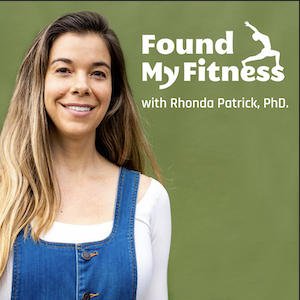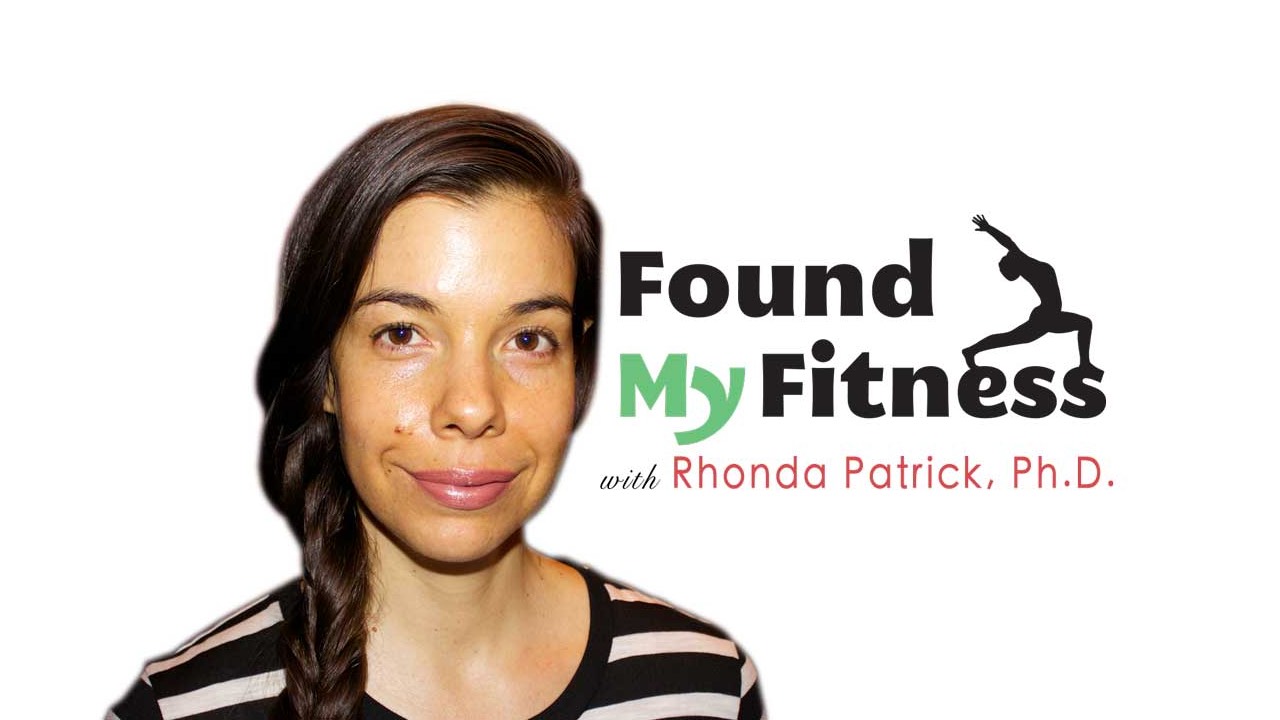How to restore a healthy microbiome after taking antibiotics with Tim Ferriss
Get the full length version of this episode as a podcast.
This episode will make a great companion for a long drive.
The BDNF Protocol Guide
An essential checklist for cognitive longevity — filled with specific exercise, heat stress, and omega-3 protocols for boosting BDNF. Enter your email, and we'll deliver it straight to your inbox.
The microbiome is the entire population of microorganisms that live on or in the body. There is some evidence that certain signatures of gut population levels can have a strong correlative and even causative relationship with health status. Antibiotics, when taken, kill both pathogenic and healthy bacterial species. Probiotics are one way of repopulating the gut with beneficial bacteria following antibiotic use. In this clip, Tim Ferriss and Dr. Rhonda Patrick discuss the specifics of restoring a healthy microbiome using probiotics. Note: The De Simone formulation is now sold as visbiome.
- Rhonda: So you're talking about measuring your fecal bacteria population using uBiome?
- Tim: Yeah. UBiome or there are others, like Rocky Mountain blah, blah, blah doctors data, whatever it was.
- Rhonda: Okay. There are other ones.
- Tim: Yeah. UBiome has a slightly different approach, but along those lines.
- Rhonda: I agree with you for one. First of all, I heard a podcast that you did with Jessica Richman from uBiome and I think you had talked about this and that's how I became first aware the link between . . . when you mentioned having this hypothesis that you thought possibly some of these symptoms of Lyme disease were a symptom of complete gut dysbiosis where you're taking several rounds of antibiotics and you are obliterating your gut bacteria, a lot of the good ones are going away. If you don't take a very strong probiotic immediately after antibiotics, it repopulates with all the bad stuff and it's really hard to get because they occupy space. They're sitting in what's called the mucin in the gut. They have to stick in the mucin to stay, otherwise anything you take will kind of just flow through. It's kind of like the flow through. So it's really hard to repopulate. I've been doing a lot of self-experimentation. I've been using uBiome to track my gut bacteria genotypes. But have you tried VSL3?
- Tim: I have it in the refrigerator right now.
- Rhonda: Do you?
- Tim: Yeah.
- Rhonda: Okay. So the sachets are what I recommend because . . .
- Tim: Yeah. I have the capsules.
- Rhonda: The sachets have 450 billion, which is more than what the capsules have. 450 billion is ten times more than what most probiotics have. The thing about VSL3, very interesting, so it's the probiotic that I take. I'm taking it because I've had some gut issues that started in graduate school because I got MRSA.
- Tim: Yeah. That's not fun.
- Rhonda: Antibiotics were the prescription and I had several courses of strong ones. Finally, it kept coming back and I was like fed up.
- Tim: How do you get MRSA?
- Rhonda: I don't really know. I worked in a hospital.
- Tim: Is that methicillin-resistant Staph?
- Rhonda: Yes. Aureus. Staphylococcus aureus.
- Tim: Staphylococcus aureus, yeah.
- Rhonda: So I worked at a children's hospital.
- Tim: That's a good place to get it.
- Rhonda: They're everywhere in hospitals. Who knows where I got it? The point is I got it and it sucked. Finally after like, I don't know, three or four rounds of antibiotics, I would take it and it would go away and then a month later it would come back again and again. I was like, "I can't do this." So I read the literature, with the help of my husband Dan, that garlic and grapefruit seed extract, a concoction of things, I applied both topically and made a cream and I orally took and within 24 hours I got this thing to come to a head, pus out, it never came back.
- Tim: Interesting.
- Rhonda: But as a consequence of antibiotic use, I had serious gut issues, led to IBD. I've finally been able to recover.
- Tim: IBD, irritable bowel disorder.
- Rhonda: Inflammatory bowel, yeah.
- Tim: Inflammatory bowel disorder.
- Rhonda: But it's been a really, really long journey in tweaking my diet. Doctors, of course, I went to see doctors and they were just like, "Here, take an SSRI, it helps with the pain." I'm like, "I'm not going to take an SSRI.
- Tim: Yeah. No thanks.
- Rhonda: I walked out of that doctor, like, "You're insane." This was like a pelvic pain specialist doctor. So I've just had terrible experiences with doctors. Finally, I'm like, "Why aren't you asking me about my diet, fiber, things like that?" So I tweaked my diet and did lots of things. But VSL3 . . .
- Tim: With the uBiome testing, have you seen . . . I haven't done a follow-up test in a few months, but I have been taking VSL3, so now I'm optimistic hopefully.
- Rhonda: So I did a 30-day VSL3 course with the sachets, which are 450 billion and did a stool test. I'm still waiting for those results. My husband and I both, Dan, he's done a recent course of antibiotics. So I had him do his baseline and then right after, literally the day he stopped taking antibiotics, did a sample for uBiome. I got that data back, so I've been looking at that. So I'm going to talk about all that. It's really complicated and things in the literature are confusing and some people think some things and they're actually not true. So I've been looking at other people's uBiomes. I'm going to be doing a series of talks on this.
- Tim: Cool.
- Rhonda: I'm pretty excited.
- Tim: I'll check them out.
An unhealthy change in the normal bacterial ecology of a part of body, e.g., the intestines or the oral cavity.
The genetic constitution of an individual organism. The combination of genotype and environment determine an organism's physical characteristics – known as the phenotype.
An essential mineral present in many foods. Iron participates in many physiological functions and is a critical component of hemoglobin. Iron deficiency can cause anemia, fatigue, shortness of breath, and heart arrhythmias.
An infectious disease caused by bacteria of the Borrelia type which is spread by ticks. The most common sign of infection is an expanding non-painful area of redness on the skin, fever, headache and feeling tired. Lyme disease is the most common disease spread by ticks in the Northern Hemisphere and is estimated to affect 300,000 people a year in the United States and 65,000 people a year in Europe.
The collection of genomes of the microorganisms in a given niche. The human microbiome plays key roles in development, immunity, and nutrition. Microbiome dysfunction is associated with the pathology of several conditions, including obesity, depression, and autoimmune disorders such as type 1 diabetes, rheumatoid arthritis, muscular dystrophy, multiple sclerosis, and fibromyalgia.
A chemical that causes Parkinson's disease-like symptoms. MPTP undergoes enzymatic modification in the brain to form MPP+, a neurotoxic compound that interrupts the electron transport system of dopaminergic neurons. MPTP is chemically related to rotenone and paraquat, pesticides that can produce parkinsonian features in animals.
A mucopolysaccharide or glycoprotein that is the chief constituent of mucus secreted by the epithelial cells lining the gut in order to produce a barrier preventing infection by microorganisms inhabiting the gut.
A class of drugs that are typically used as antidepressants in the treatment of major depressive disorder and anxiety disorders. Some of the drugs that fall under this classification include: Citalopram (Celexa), Escitalopram (Lexapro), Fluoxetine (Prozac), Paroxetine (Paxil, Pexeva), Sertraline (Zoloft).
The highest level of intake of a given nutrient likely to pose no adverse health effects for nearly all healthy people. As intake increases above the upper intake level, the risk of adverse effects increases.
Attend Monthly Q&As with Rhonda
Support our work

The FoundMyFitness Q&A happens monthly for premium members. Attend live or listen in our exclusive member-only podcast The Aliquot.







